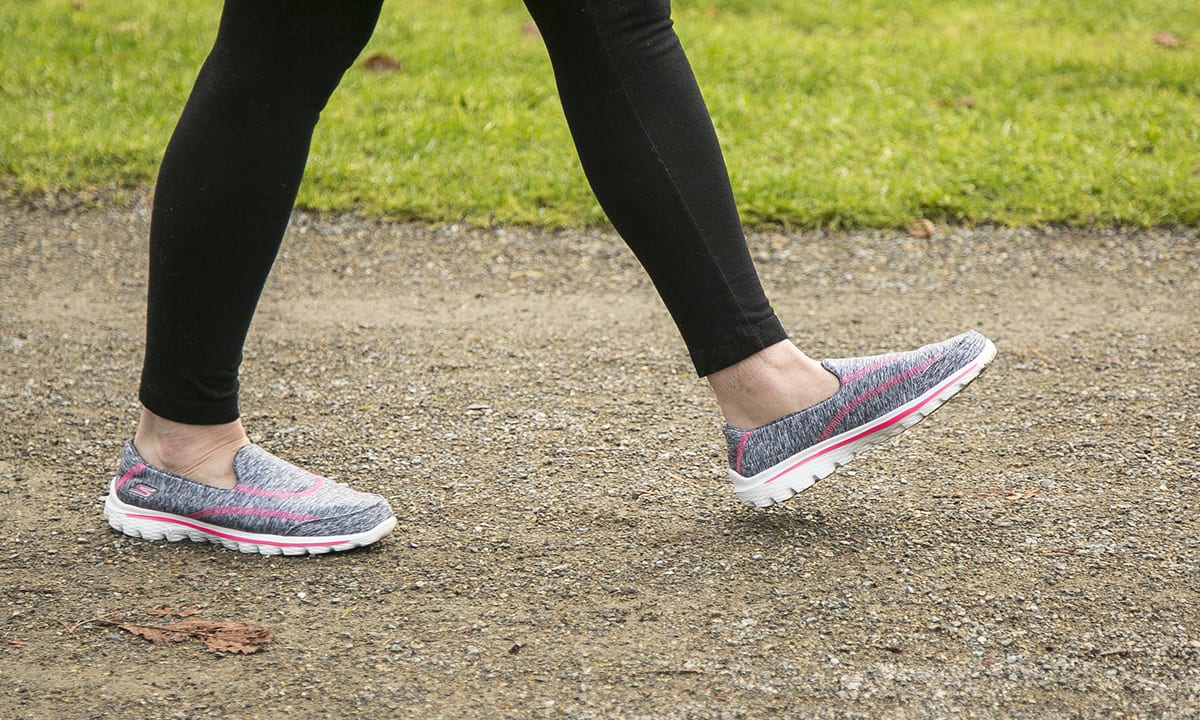We tried it: 10,000 steps

Ten thousand. That’s how many steps you should be taking each day, according to a widely touted notion.
Although the origins of this advice are a bit murky (in fact, it appears to have originated from a 1960’s Japanese marketing campaign for a pedometer), it’s so commonly accepted that you’re not likely to stop seeing this recommendation anytime soon.
It’s a big number, 10,000 — the equivalent of walking almost five miles. If you have a job that involves a lot of walking, or if you have small children you need to keep up with, it may not seem difficult to achieve.
But what if you don’t have a job that keeps you active? How do you hit that 10,000 mark, if you’re stuck at a desk all day?
After downloading a fitness tracking app and pedometer onto my phone, I decided to find out. Here’s what I learned.
Park far away
Parking is at a premium in downtown Tacoma near the MultiCare office where I work, so if the building parking garage is full, I have to park a few blocks away.
While not enjoyable in cold, rainy weather, it does help add a few hundred steps to my total for the day. It’s also easy to add in a few steps by parking further away from store entrances rather than looking for that perfect, up-close spot.
Get up and go
Getting up and taking a short walk around the office several times a day is also a must if you’re going to make 10,000 steps in a day. A quick couple-minute loops down the stairs, around the office and back up again added about 350 steps to my count each time.
Walking to get lunch, or to get to meetings on other MultiCare campuses also helped. On days when I didn’t have meetings, I’d add an extra round or two of my office loop.
If your home is your office — as it is for many people today — the scale of your workspace is often much smaller than if you are in an office building, and hitting 10,000 steps can be extra challenging. Carving out time for a walk around the neighborhood each day will help add to your step count.
Cardio is key
I don’t think there’s any way I would have been able to get to 10,000 steps without some kind of exercise, even on my most walk-filled workdays. My workouts of choice are step aerobics and kickboxing (so ’90s, I know!), and 30 to 40 minutes of either was usually enough to bring me close to or over my 10,000-step goal.
Even with a workout, though, I did occasionally find myself watching TV while pacing the room or doing a few circuits through my house in the evening to get the steps I needed.
Weekends are hard
Weekends were surprisingly more challenging than the work week. I did not manage to get to 10,000 steps on any weekend day during my experiment. I imagine if you are a runner — which I am not — this might not be as difficult a mark to hit. But for me, even with a workout, and a day of running errands, the best I ever managed was in the 6,000 to 8,000 range.
Just be active
While it did require a few changes to my routine — especially the part where I had to remember to get up and walk at work — I did learn that getting to 10,000 steps is possible, even if you are an office (or home office) worker. (I also learned that I probably need to figure out how to be more active on the weekends.)
Of course, I have the flexibility to take short breaks throughout the day, and my job doesn’t require me to monitor a phone or be available in a set location the whole time I’m there. So, getting to 10,000 may be more challenging for some.
The current American Heart Association (AHA) guidelines recommend adults get 150 minutes (2 1/2 hours) per week of moderate-intensity aerobic activity or 75 minutes per week of vigorous aerobic activity, or a combination of both, preferably spread throughout the week.
“Moderate intensity” means you’ll breathe harder than normal and your heart will beat faster, but you’ll still be able to talk. Brisk walking, gardening and water aerobics are all considered moderate-intensity activities.
AHA also recommends moderate- to high-intensity muscle-strengthening activity (like weights) at least two days a week.
So, at the end of the day, being active is what matters, whether you’re counting steps, reps, minutes or miles. Keeping track of what you’re doing is a healthy way to keep tabs on your fitness level and stay motivated to achieve your goals, be it 10,000 steps a day, weight loss or improving our overall health so you can feel your best each day.
MultiCare can help provide the support you need to achieve your healthy weight goals. Learn more about weight-loss options in your area, including surgical and non-surgical medically supervised options.
Editor’s note: This article was originally published in January 2016 and updated in January 2023.



